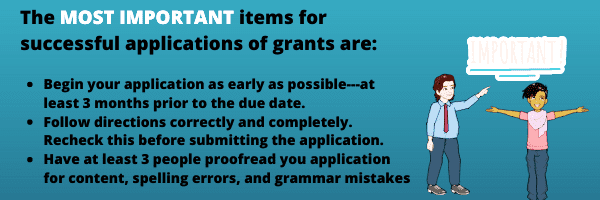Welcome to our Public Safety Grants column, where our goal is to provide you with resources that will increase your success to secure funding for your agency through grants. Our last newsletter article focused on COGs and their role in grants.
In this article, we will be diving deeper into the world of COGs, with the end goal of you having a new set of tools, or hacks, to increase your odds of being funded through the Texas governor’s office’s grants.
Don’t live in Texas? Check the following website to determine how your COG works in your state: https://narcorg/state-associations. Regardless, we feel there is essential knowledge for you to apply to your state or even federal grants.
To re-cap our last article, we learned that a COG (Council of Government) has a significant role in Texas’ Public Safety/Criminal Justice Department (PSO/CJD) grant funding.
NCT-COG is our MVP
Our local COG, NCT-COG (North Central Texas Council of Government), teams up with the Criminal Justice Department to facilitate the federal grants given to our state via the Governor’s office. The Office of the Governor (OOG) disperses the grants. The NCT-COG and CJD administer the grants’ dispersion, financial allocation, and operations for the OOG.
The NCT-COG services 16 counties and assists our government in many areas, but for this purpose, we will focus on the interactions between the NCTCOG and the Criminal Justice Department. NCTCOG is active in managing the Public Safety/Criminal Justice grants through the Governor’s office.
NCTCOG provides education, technical assistance, scores grant applications, and makes recommendations for possible funding and possible recipients for the applicable grant. The OOG depends on the NCTCOG to provide a recommended recipient spreadsheet that meets all the criteria conditions. The yearly grant cycle is depicted below, with the NCTCOG’s roles in each step.

As illustrated, the NCTCOG begins its year by posting the grant opportunities on its website. At the same time, the Office of the Governor lists the opportunities for the upcoming year on their website, www.egrants.com. This website is also where applicants submit all their information to apply for funding.
The Basics All Applicants Need to Know and Follow
Let’s get started with some helpful hints and suggestions. The first suggestion is a crucial one, and we strongly advise you to give this the highest priority:
- Determine if you meet all the qualifications to apply for the OOG grants. These are available in the OOG Grantee Conditions. This document is crucial to verify you meet every requirement needed to apply for the grant, so please read the entire document. If you determine your agency is eligible, log into www.egrants.com and get acquainted with the opportunities available to you. Your agency needs to view these every January to apply for their upcoming grants.
After viewing our previous infographic, you may be puzzled by it being February, and knowing the OOG grants were due weeks ago. Why would you need this now? The reasoning can be found in the next section, Most Important Tricks for Obtaining Grants.

Most Important Tips for Obtaining Grants
- The #1 way to increase your odds of success in the grant world is by starting as early as possible. We have intentionally given you a year to prepare for this process, and we advise starting immediately, especially if this is your first time. Estimates indicate it takes an average of 100 hours of work to apply for these grants and all federal grants. Give yourself the gift of time, and it will most likely result in a big pay-off for your agency.
- Another significant way to increase your success comes from the COG and OOG staff. Follow directions exactly. Failure to follow directions appropriately is the staff’s most frequent mistake when reviewing applications. Applications are discarded for failure to follow instructions, so double-check that you have followed everything.
- Equally important is making sure you get your documents proofed by as many people as possible. Proofing should include editing, content check, grammar check, and spelling check. Any errors in this could result in decreased scores or even disqualification.
- Collaborating with other agencies and applying for the grant together is another HUGE advantage because it increases your odds of securing a grant. This collaboration also gives you more opportunities to apply for grants in other categories besides Public Safety. The OOG and the PS office love it when agencies work together to benefit a group. You are more likely to get approved if you collaborate and have a good application.
NCTOG Grades Everything You Do (Minus the Red Pen)
Our infographic showed that our COG/NCTCOG has many high-level responsibilities at different grant lifecycle points. One important area NCTCOG participates in is the scoring of your application.
Wait, NCTOG Wants Me to Cheat?
What could be more helpful than having a cheat sheet telling you everything the scorer will be looking for? NCTCOG provides this for you, and you should use this every step of your application. Use this document for optimal success in winning an award. Download here: NCT-COG Scoring Criteria.
The Scoring Criteria document is a tool that should immensely help your agency. Additionally, we collected a few more hacks that center around the Scoring Criteria document,
How to Use the ‘Cheat Sheet’ for Maximum Benefit
Use the scoring document you just downloaded in conjunction with the hints below to increase your funding potential.
- Problem Statement Focus on making this as concise as possible and ensuring you do not have too much data in this section.
- Use the Supporting Data section to provide stats that back up the problem description. You need three years of supporting data to prove a problem exists. You will need to discuss its size and scope and the adverse effects on the population. If local, don’t use statewide data, and if statewide, don’t use national data.
- Target Group: agencies, individuals, or other groups served by the project; include Size ad demographics, challenges they face, etc. Show that they understand the target group
- Project Approach Focus only on what the grant is paying for—extra info can confuse the reader.
- Capacity: the collaboration table in the addendum will also be used to evaluate this section
- Performance Mgmt: project should have goals and objectives and be shown as follows. The goals focus on the target population and are broad statements. Objectives are clear, tangible, and specific. A project can have multiple purposes. Describe baseline. Specific (i.e., To reduce/increase something by x amount by date). You can have various objectives. Show Data collection-data analysis-decision-making. Baseline hint: baseline info is numeric. The current state is a 12-month estimate of what you are doing for the output/outcome measures. See measures tab in egrants. You can link activity to output measures. Estimate them and put 0 if they are not applicable
- Evidence-Based: cite specific research, evidence, or best model used for the project’s design.
- Budget IMPORTANT: See funding announcement and Guide to Grants for unallowable costs. Use Users Guide for Creating an Application. Provide enough information to ensure the reader knows what the project is funding. It should answer the questions: Is this line item reasonable? Does it fit the task? Explain what you will be buying (equipment and supplies).
- Sustainability: Show how you plan to maintain everything beyond the grant period.
- Local Priorities: no narrative section on this but this is vital because you must make sure your document aligns with at least one priority from this document of local importance. See the 2022-23 List of Priorities here.
Last But Not Least
We have been gifted with some final tips from the NCTCOG. Remember to save these for future grant applications.
- Read all fund source information on the Narrative Tab
- Respond to ALL Project Narrative components
- Don’t put “N/A” in any Project Narrative sections—will be considered incomplete if you do
- Each tab has a 2-hour time out feature so use the Save Button frequently
- No formatting is allowed in www.egrants.com
- Areas that do not apply to your project must have a 0 or n/a in it
Tools to Get You Closer to the Prize
We feel we have armed you with an arsenal of ways to increase the odds your agency gets funded for a PS grant. Please use and store these suggestions to give yourself an advantage over other applicants. Also, please feel free to share your ideas and suggestions. We would love to hear from you.
In our next column, we will have even more helpful hints for applying for OOG grants via NCTOG. In the meantime, check out the additional grant resources we have on the grants page of our website, cardinaltracking.com




